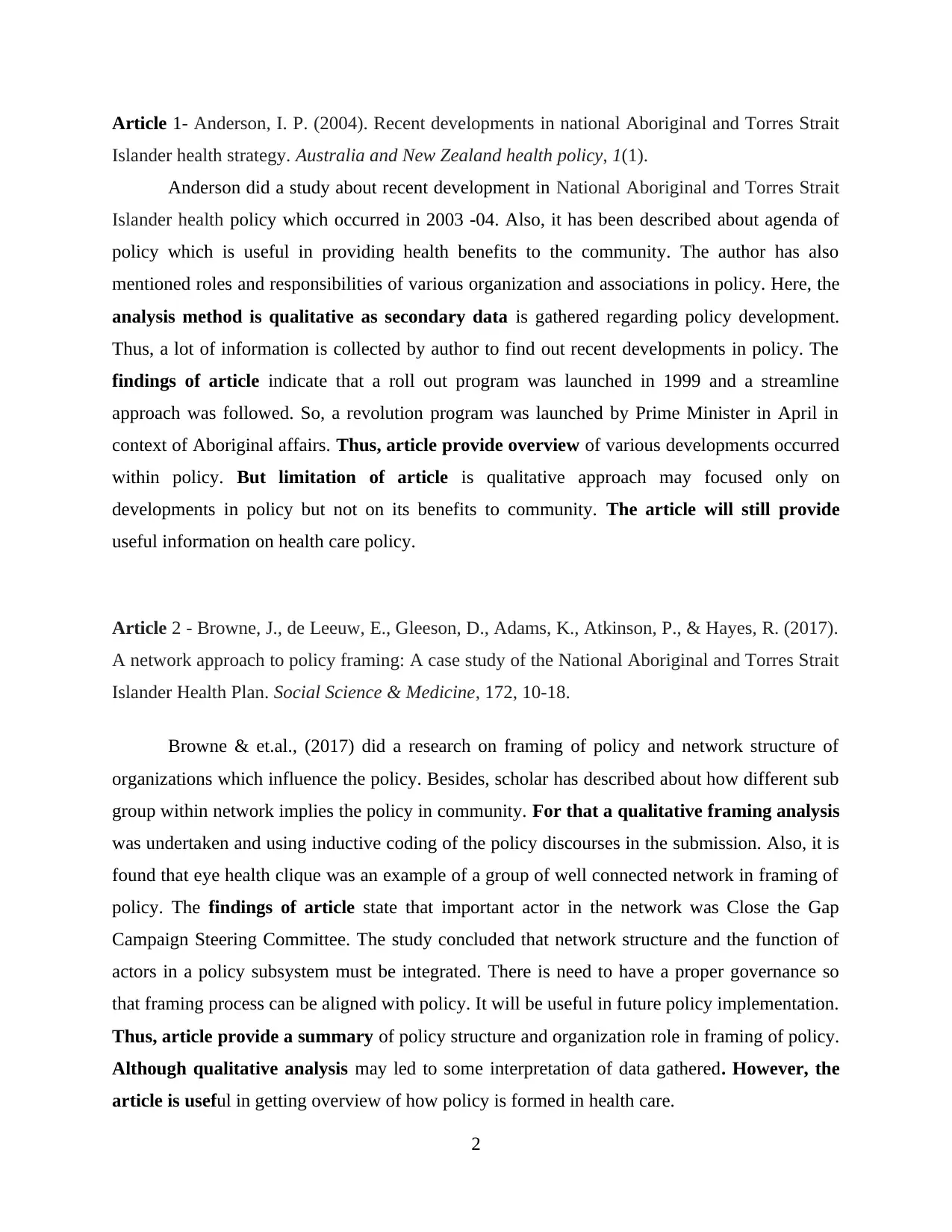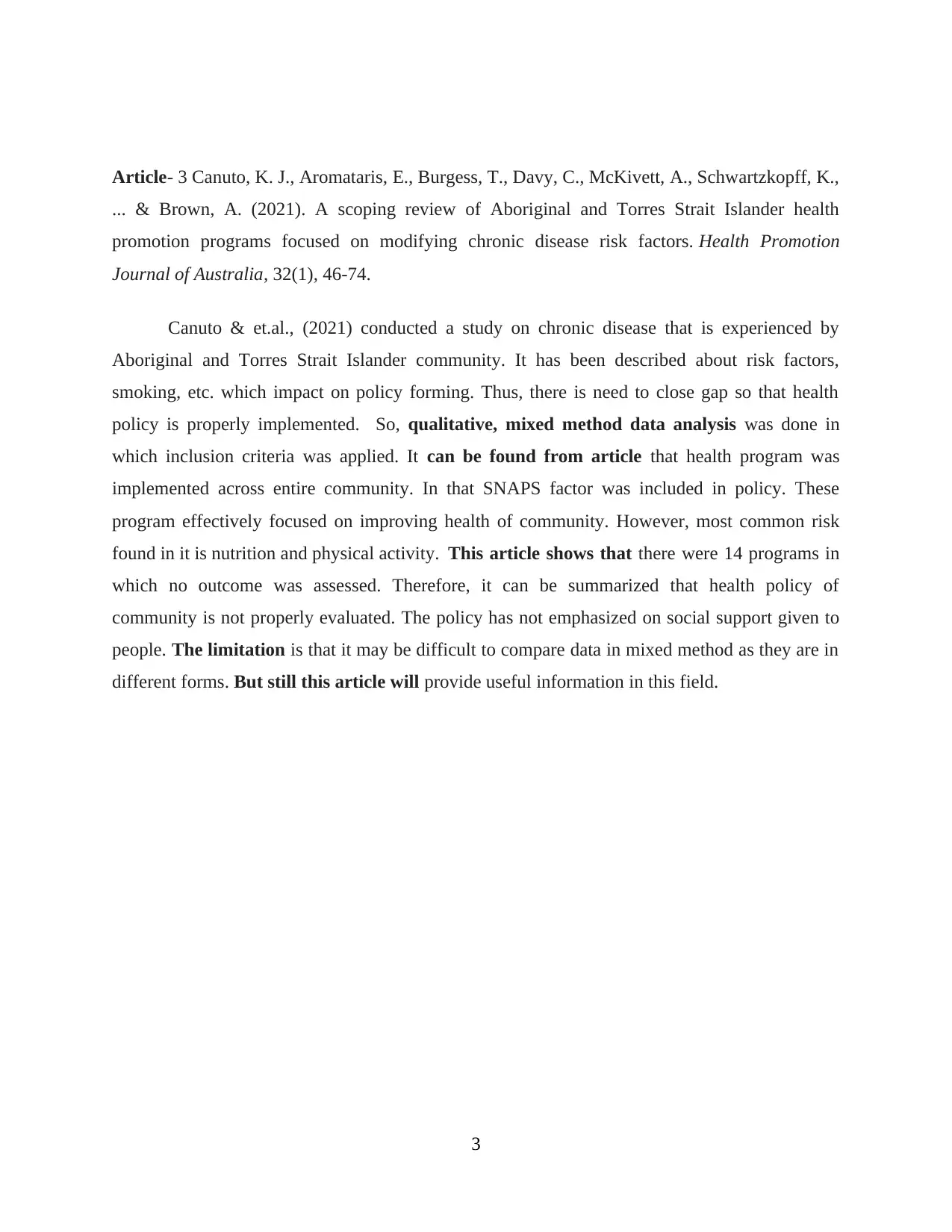Annotated Bibliography: Australian Indigenous Health Policy Research
VerifiedAdded on 2022/12/26
|3
|746
|24
Annotated Bibliography
AI Summary
This annotated bibliography presents a critical analysis of three key articles related to Aboriginal and Torres Strait Islander health in Australia. The first article, by Anderson (2004), examines recent developments in national health strategies, focusing on policy agendas, organizational roles, and responsibilities, primarily using a qualitative approach to analyze policy developments. The second article, by Browne et al. (2017), investigates the framing of health policy and the network structures influencing policy implementation, using qualitative framing analysis to understand how different subgroups within the network affect policy outcomes, with a focus on network actors and governance. The third article, by Canuto et al. (2021), reviews health promotion programs aimed at modifying chronic disease risk factors within the Indigenous community, employing a mixed-methods approach, including inclusion criteria, to analyze program effectiveness and identify common risk factors such as nutrition and physical activity, while also highlighting the limitations of program evaluation and the need for social support.
1 out of 3










![[object Object]](/_next/static/media/star-bottom.7253800d.svg)